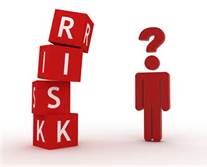Hyper-Focus on Corporate Governance: Dangers and Risks to Corporate Boards
 Corporate boards are under increasing government and shareholder scrutiny. The government is climbing the corporate ladder by prosecuting senior executives for civil and criminal violations. It is only a matter of time until the government will find the right set of facts to try to prosecute a Chairman, or Committee Chair, for a criminal violation.
Corporate boards are under increasing government and shareholder scrutiny. The government is climbing the corporate ladder by prosecuting senior executives for civil and criminal violations. It is only a matter of time until the government will find the right set of facts to try to prosecute a Chairman, or Committee Chair, for a criminal violation.
The Dodd-Frank Act increased shareholders’ ability to hold corporate directors accountable. Shareholders are organizing and filing shareholder derivative law suits to extract governance improvements along with financial settlements for governance miscues.
As you can see, the life of a corporate board member is far from cushy these days. No longer can a board member review basic financial and corporate information, attend four meetings a year, and collect a nice yearly fee for their services. Instead, the level of responsibility, the amount of information to review and master, and accountability have dramatically increased. These trends are expected to continue for the foreseeable future.
Corporate governance is the foundation of not only corporate performance but also of the company’s compliance and ethics program. In the absence of proper corporate governance, a company is more likely to suffer compliance problems.
Board members are being inundated with information. The average number and volume of board books is increasing each year. A recent survey conducted by Thomsen Reuters found that on average, 92 board books are created annually, each with an average of 116 pages. Some companies produce as many as 300 board books per year, an average of five per week. Board members are fully aware of the increased risks and they often seek outside sources of information to gain insights on company performance.
Technology is critical to support effective governance of a corporate board. Directors use online board portals to distributor board materials. Some board members continue to cling to paper distribution and review but such a practice increases risks for security lapses and unintended disclosures.
Government regulators are requiring greater transparency, review and documentation. More corporate boards are becoming involved in setting a risk culture and pushing such strategies through senior management. Only a quarter of corporate boards do not become involved in risk oversight and management.
Board members cited risk oversight and regulation as the most significant challenge facing corporate boards. As a result, board members are increasing the amount of training, either in person or online.
Board members are under pressure to improve shareholder relations, but this is difficult given the global nature of boards, in membership and operations, and the lack of time they can devote to addressing shareholder relations.
Board members have identified the top three risks as data privacy and confidentiality, industry-specific regulations, and bribery/corruption. Strategic risk is risk as part of risk profiles. After these significant risks, board members usually cite safety and environment, conflicts of interest and fraud and security as their top risks.
 For most corporate boards, it is easier to identify the significant risks than to measure the effectiveness of compliance programs. Compliance assessments tend to be based on a mix of specific measures relating to compliance elements. These metrics are being questioned as to their validity and overall relevance to assessing a corporate compliance and ethics program.
For most corporate boards, it is easier to identify the significant risks than to measure the effectiveness of compliance programs. Compliance assessments tend to be based on a mix of specific measures relating to compliance elements. These metrics are being questioned as to their validity and overall relevance to assessing a corporate compliance and ethics program.
In the face of increasing risks and greater demands for effective board performance, focus on governance issues will continue as boards seek to reduce risks and exposure to government enforcement and shareholder litigation.














